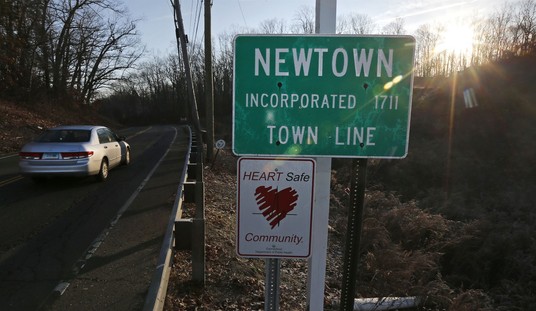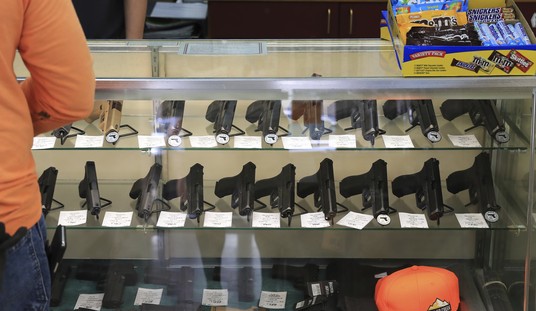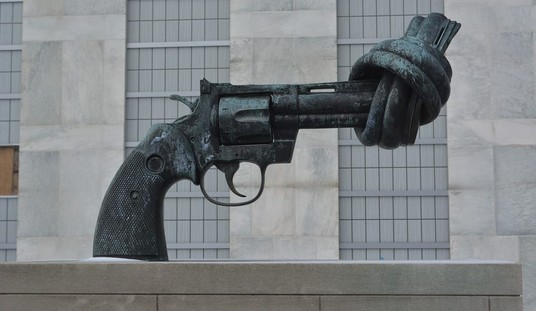Many gun owners are perplexed with how U.S. Federal Judge Catherine C. Blake could possibly base her ruling that Maryland’s 2013 “assault weapons” ban is constitutional on the premise that these semiautomatic firearms are “dangerous and unusual.” The answer isn’t just in her ignorance of the facts, as the plaintiffs did a very thorough job showing how common and popular AR-15s and other such rifles are with U.S. citizens, but instead has everything to do with her background and politics.
Judge Blake is a Harvard educated attorney who was nominated for her current judicial position in 1995 by President Bill Clinton. In her 47-page decision she systematically presented the facts and then judged them, not by the facts, but by her ignorance of America’s history of civil rights (the Second Amendment of the U.S. Bill of Rights is by definition a civil right) and her politics.
To achieve the ruling she did she had to slip her opinion through the U.S. Supreme Court’s Heller v.D.C. (2008) decision. She tried and fell on her face beneath the facts, but didn’t seem to know it.
Heller found that the Second Amendment recognized and solidified a pre-existing, individual right to keep and bear arms. Specifically, the Court ruled in Heller that “law-abiding, responsible citizens [have the right] to use arms in defense of hearth and home.” By determining that law-abiding citizens have the right to bear arms, the Supreme Court found that D.C.’s complete ban on handguns, which it said was the class of arms “overwhelmingly chosen by American society for [the] lawful purpose [of self-defense],” infringed on the core principle of the Second Amendment.
Now, in Heller, the Supreme Court also recognized that the right to bear arms is not unlimited—by comparison, neither is the First Amendment’s protections of free speech. What Heller found is that the Second Amendment protects guns that are “in common use” and that are “typically possessed by law-abiding citizens for lawful purposes.”
Judge Blake noted all this but then wrote: “First, the court is not persuaded that assault weapons are commonly possessed based on the absolute number of those weapons owned by the public. Even accepting that there are 8.2 million assault weapons in the civilian gun stock, as the plaintiffs claim, assault weapons represent no more than 3% of the current civilian gun stock, and ownership of those weapons is highly concentrated in less than 1% of the U.S. population.”
She concluded that “assault weapons” are not used for self defense; are frequently used in mass shootings; are more offensive in nature than their fully-automatic military counterparts; and pose a heightened risk to law enforcement and civilians.
For all of this Judge Blake drew on data provided by two anti-gun groups. To her the numbers and substantial data supplied by the National Shooting Sports Foundation (NSSF), the trade association for firearms manufacturers, the National Rifle Association (NRA) and others was inconvenient.
She didn’t care that figures from the Bureau of Alcohol, Tobacco, Firearms and Explosives (ATF) show that between 1990 and 2012, U.S. manufacturers produced approximately 4,796,400 AR-15-type rifles (what she deemed “assault weapons”) for sale to U.S. citizens. Also during 2012, some 3,415,000 of these semiautomatic rifles were imported into the U.S. for sale to citizens. In Maryland specifically, from 1994 to 2012, there were a total of 604,051 transfers of regulated firearms, of which some 46,577 were so-called “assault weapons.” (I say “so called” because the term can only be defined politically.) This, of course, doesn’t count any private sales of these firearms that have grown so popular most manufacturers had been back ordered for years and are just now starting to keep up with demand.
Judge Blake then concluded: “Upon review of all the parties’ evidence, the court seriously doubts that the banned assault long guns are commonly possessed for lawful purposes, particularly self-defense in the home, which is at the core of the Second Amendment right, and is inclined to find the weapons fall outside Second Amendment protection as dangerous and unusual.”
She call’s them “unusual” even though a consumer study done by the NSSF found that at five million Americans own them and that results from retail studies show that nationally these semiautomatic firearms make up 20 percent of gun sales. By comparison sales of bolt-action and lever-action rifles made up 14 percent of overall sales.
She doubts they’re used for “lawful purposes” even though an NSSF survey that asked 20,000 gun owners about their AR-type rifles said they top reason they own them is for “recreational target shooting.”
The true American history Judge Blake is clearly ignorant of is that the AR-15 is merely the latest example of private citizens using and helping to develop a firearm type that is closely related to those used by the military. Every major firearm type used by the U.S. military has also been owned and used by civilians. This goes for lever-action Winchesters, bolt-action Krags, pump-action shotguns from Browning, and the modern AR-15. Anti-gun politicians who’re fond of saying that “weapons of war have no place in civilian hands” are either unaware of American history or are dishonest.
Demonizing this category of guns doesn’t make sense statistically. According to FBI crime statistics, only about 2.5 percent of murders are committed with any type of rifle. AR-15-type rifles make up an even smaller fraction of that percentage. In 2011, for example, almost four times as many murderers used knives (323 used rifles whereas 1,694 used knives or another sharp object in 2011) to kill someone.
Actually, the semiautomatic technology used in the AR-15 was invented in the late 19th century and perfected by civilian gun makers in the early 20th century. Semiautomatic designs were so popular with civilians in the early twentieth century that a 1907 magazine ad for the Savage Model 1907 (know as the “Savage Automatic Pistol”) read: “Her property—her little ones—her own life—she knows are safely protected when she has a Savage Automatic in her home. She knows its ten sure shots are at her command—quick or slow, as she chooses—one to each trigger pull.”
Mark A. Keefe IV, editor of American Rifleman, tell me, “What’s really interesting is that from about 1900 to 1940 semiautomatic rifles were more often used by civilians than the U.S. military. It was the civilian market that drove and tweaked semiautomatic rifle designs that made it possible for the M1 Garand.”
It was those guns that led to the development of the AR-15. When, in 1963, the U.S. military finally ordered 85,000 of these rifles (which would soon be dubbed the M16) Colt had already begun selling semiautomatic AR-15s to U.S. consumers.
All that’s just the beginning of the truth about the past, present and future of America’s guns that Judge Blake got wrong, but all the rest is in The Future of the Gun.
Frank Miniter is a New York Times bestselling author whose latest book is The Future of the Gun.








Join the conversation as a VIP Member